


Rule 1Looking into the distant Universe means
looking into the past
The strange thing is that when we look at the Universe from the Earth, what we see is actually the Universe as it was in the distant past. For example, when we look at the Sun, we are actually seeing what it looked like eight minutes ago. When we look at Pleiades (Star cluster M45), what we are actually seeing is what this star cluster looked like about 400 years ago. Why does this happen? We see stars and galaxies because the light they emit travels to where we are, but they are so far away that it takes time for light to even reach us. By the time that light gets here, the stars that emitted that light have changed.
Rule 2There is an "observable" Universe and much larger
volume that lies behind our ability to observe it
The “Current Universe” spreads out on all sides of the human being pictured at the center of the diagram, but we are unable to see what this Universe really looks like. Remember Rule 1: What we see is the Universe as it was in the past. If we compare this diagram to the celestial bodies that we can see with the naked eye or through telescopes, we find a teardrop shape like the one shown in the center of the diagram. This is the only part of the Universe that we can see, and even these celestial bodies are images from a different era, thousands, millions, or even billions of years ago.
Rule 3In space, distances are not always what they seem to be
When we talk about the distances to celestial bodies, we talk about “the path that light has traveled to reach us”. For example, light from the furthest point in the observable Universe has traveled for 13.8 billion years, a distance that we refer to as “13.8 billion light years”. During that time, however, the Universe has continued to expand, so the path that light takes has grown increasingly longer from the time the journey began, and the starting point is much further away. By the time the light reaches us, that starting point is estimated to be as far as 47 billion light years away.
Rule 4The Universe becomes visible through
the "Eyes of Science"
The observable Universe (the teardrop-shaped image at the center of the diagram) is only a drop in the bucket compared to the vast expanse of the actual Universe. Through the “Eyes of Science”, however, we have learned a great deal using clues from the observable Universe. How was the observable Universe created (the bottom of the inverted cone)? How has it expanded (the outer surface of the cone)? And does a Universe exist beyond the outer limits of this cone? This diagram contains the results of many such scientific discoveries.
The Universe is waiting for you to unravel its mysteries.
The presumed current state of the UniverseCountless stars shining in the darkness
This is the state of the Universe, as brought to light by recent observations.
About 70% of the Universe is “dark energy”, a mysterious form of energy that accelerates the expansion of the Universe.
About 30% is an unidentified substance called "dark matter",
and about 5% is made up of normal matter*.
The Universe has a diverse layered structure comprising galaxies with tens or hundreds of billions of stars,
galaxy clusters that contain hundreds or even thousands of galaxies,
and a large,mesh-like structure of galaxies that are spread out across hundreds of millions of light years.
* 'Normal matter' is the basic components that comprise all substances in the world around us.
All things, from animals to stars in the night sky, including our own bodies, are made up of combinations of normal matter.

 Composition of the Universe,
Composition of the Universe,as determined by the WMAP
spacecraft and other sources
The mesh of the UniverseDark matter and large-scale structures
Why are galaxies distributed in the form of a mesh?
The answer is “dark matter”, a substance that remains unexplained,
and which cannot be directly observed.
It is believed that in volumes containing dark matter,
gravity caused even more dark matter to gather and create "large-scale structures"
in the form of a three-dimensional mesh.
Normal matter then collapsed onto the sites where large amounts of dark matter resided,
eventually forming galaxies embedded in these large-scale structures.
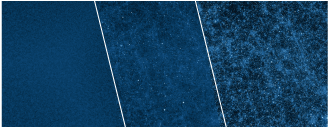
The first star brigns light to the UniverseThe birth of stars and galaxies
We know from observations that galaxies already existed
in the Universe about 13.1 billion years ago,
but we don’t know exactly when the first stars were born.
We believe that the first star had about 40 times more mass than our Sun.
A variety of elements were created inside this giant star.
These elements were scattered by a supernova explosion
and they became seeds of new generations of stars.

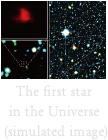
Atoms appear, nad the fog of the Universe liftsElectrons combine with atomic nuclei
About 370,000 years after the birth of the Universe, "the fog of the Universe lifted".
Up until that time, the Universe was superheated,
with huge volumes of "electrons*1" flying back and forth.
These electrons crashed into photons, preventing light from moving in a straight line,
and making the entire Universe opaque, as though in the middle of a fog.
When the temperature of the Universe dropped to around 3,000K,
however, electrons bonded with atomic nuclei to form "atoms",
which no longer impeded the movement of light. In this way, the Universe became much clearer*2.
Atoms with similar properties, referred to as elements,
would eventually become the materials from which the first stars formed.
*1: When substances are broken down into their most basic ingredients, the smallest component,
which cannot be broken down any further, is referred to as an "elementary particle".
Electrons and photons are examples of these elementary particles.
*2: The light that was dispersed when this happened can still be observed by humans today,
as "cosmic microwave background radiation".
Cosmic Microwave Background,
observed by the Planck spacecraft.
This is what the Universe
looked like when the "fog lifted".
The three minutes in which everything was createdThe starting point in the creation of matter
About three minutes after the birth of the Universe:
that's the time it took to create all of the matter that exist in the Universe around us.
During these three minutes, the superheated Universe cooled off as it expanded at an incredible rate.
Quarks, another type of elementary particle and a building block of matter,
gathered to form protons and neutrons. Then, these protons and neutrons came together
to form the "atomic nuclei" of hydrogen and helium, the lightest of all the elements.
About 92% of all the atomic nuclei created at this time were hydrogen,
and the remaining 8% were helium.
Now, let’s take a closer look at the instant in which the Universe was born.
The Universe as a superheated firebalThe "Big Bang"
Immediately after its formation, the Universe was a superheated, super-condensed fireball,
heated by an incalculable energy*1. This is what is now referred to as the Big Bang.
During this event, huge volumes of elementary particles, including photons, were created.
These photons flew about at the speed of light,
but about 1 trillionth of a second after the beginning of the Big Bang, a "Higgs field" was formed.
Interactions with this field impeded the movement of specific elementary particles,
slowing them down below the speed of light. With this hindered movement,
the elementary particles gained inertial mass*2.
There are two types of elementary particles: particles, and antiparticles.
When these two substances collide, they cease to exist,
becoming weightless particles similar to light.
Because there were about 1 billion times more particles than antiparticles,
the former were left behind*3. These left-over particles are believed to have become the substance
of the Universe as we know it today.
*1 The temperature at this time was a billion billion billion degrees (1x1027K).
*2 There are two types of mass: inertial mass, which manifests as hindered movement,
and gravitational mass, which causes universal gravitation.
These two types of mass are exactly the same, but the reason for this is still unknown.
*3 Antiparticles are still being created and disappearing today.
From Elemental Particles to Atoms:
The Beginning of the Material WorldWhere did the Big Bang occur?
The beginning of space and time"inflation": The raipd expansion of the Universe
In the incredible heat of the Big Bang, the energy that had pervaded the Universe
up to that time was transformed into heat.
In the very short time of less than one second from just after the birth of the Universe
to just before the Big Bang - the period called "inflation" - the Universe expanded at a fantastic rate,
increasing in size billions upon billions of times*.
The newborn Universe is believed to have been inflated at a fantastic pace by "vacuum energy",
which is similar to the dark energy that accelerates the current expansion of the Universe
but is much larger, on a scale of 10100 times. And with this inflation,
time and space became integral parts of the Universe.
* For example, imagine a single virus instantly growing larger than a galaxy cluster.
Where in the Universe are we?
Giving birth to the UniverseStarting from "Fluctuations in the 'Nothingness'"?
It is possible that in the newborn Universe, the number of dimensions was different
from what we know today. According to one theory,
the Universe originally had 11 dimensions, but eventually, superfluous dimensions fell away,
leaving only the three dimensions of space and one dimension of time.
Another theory regarding the beginning of the Universe states that the Universe
was born from "Fluctuations in the 'Nothingness'".
This Fluctuations in the 'Nothingness' is a state in which minuscule universes are born and then
disappear in an absence of substance, space, and even time.
The theory goes that one of these universes grew without disappearing,
for some unknown reason, becoming the Universe in which we now live.
But where did this Fluctuations in the 'Nothingness' come from?
And whatever it was that caused this Fluctuations in the 'Nothingness', where did it come from?
Will we ever find our way to the beginning of the beginning?
Life was formed from a variety of elements The birth and evolution of life on the Earth
Currently, many life forms, including human beings,
thrive on dry land on the Earth. Long ago, however, life only existed in the oceans.
The first life on the Earth came into being in the primeval seas*.
Various elements in the ocean are believed to have combined
and undergone chemical reactions, gradually forming complex organisms,
and eventually giving birth to the first life on Earth. But if the Earth gave birth to life,
then how did the Universe bring the Earth into being?
*It is still not clearly understood when the first life on Earth was formed, but the oldest known fossil of a living
organism is about 3.5 billion years old.


The stage is set for the formation of lifeThe fromation of our Solar System, and the Earth
The Earth and the other planets of our Solar System were formed
about 4.6 billion years ago.
Gas and dust floating in interstellar space gradually condensed
into a disk and formed the Sun at the center. Around the same time,
material further out in this disk collapsed to form the Earth and other planets*.
But where did this material come from?
It was the remnants of stars that have long since disappeared.
*In galaxies throughout the Universe, there are innumerable places
where gas and dust particles finer than grains of sand
coalesce together in huge volumes.
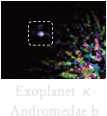
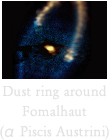

Exploding stars scatter elements throughout the UniverseSupernovae: The alchemy of the Universe
The fragments that became the material of our Solar System
were formed in part by “supernovae” that scattered various elements
throughout the Universe. Explosions that glowed more than one billion
times brighter than the Sun instantly transformed
the elements in the stars into other elements.
There are two types of supernovae.
The first is explosions occurring in stars far more massive than the Sun,
which scatter oxygen and other elements created inside the star,
and at the same time synthesize other elements such as gold and silver.
Iron, which is an essential element in the formation of the human body,
is formed as a result of a supernova explosion that occurs
in a very small segment of a binary star that includes a white dwarf.

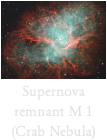


Stars that melt into the UniversePlanetary nebulae with various shapes
Not all stars meet their end in supernovae.
When comparatively low-mass stars like our Sun approach the end of their lives,
they slowly begin to diffuse the materials they have created into space.
They gradually lose their outer envelopes which spread into the far reaches of space,
leaving behind only a core. The remains of this phenomenon,
referred to as a "planetary nebula", can take on many different shapes,
some round and some long and narrow.
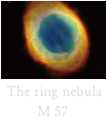

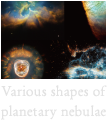

Old stars are element factoriesStars immediately before the end of their live
In many cases, when stars grow old, they become "red giants",
expanding so much that they swallow up any planets around them.
At around this time, the stars begin to run out of hydrogen at their center,
which is the fuel for the "nuclear fusion reactions" that allow the stars to shine,
and new fusion reactions begin to take place, creating carbon and oxygen from helium.
Stars far heavier than the Sun become red supergiants or
Wolf-Rayet stars that have lost their outer layer,
and even more fusion reactions occur in the star's core,
creating elements such as silicon and iron. Many of the elements essential to the
existence of human beings were created inside these aging stars.


Stars mature and shine in spaceNuclear fusion reactions and the life of a star
Fixed stars spend most of their lives as "main sequence stars",
which is the name given to fixed stars that have come of age.
At the center of the stars, there is a series of nuclear fusion reactions
that creates a helium atom from four hydrogen atoms.
This reaction generates huge volumes of light.
The period of time that a given star shines as a main sequence star
depends on the star's mass. Stars that are lighter than our Sun
will live for more than 10 billion years,
but a star with 10 times the mass of our Sun will only live
for a few tens of millions of years*.
*Our Sun's life expectancy is just over 10 billion years.
More than 5 billion years in the future,
it will become a red giant, and in its final
stages, it will become a white dwarf.

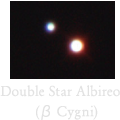
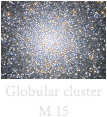

The birth and growth of starsProtostars emit jets of gas
Gas and dust clouds are the materials that form stars.
Huge volumes of this material come together to form baby stars or "protostars".
Some of this material is later ejected in fine
but powerful streams of gas called "jets" that are emitted from protostars.
Fresh material continues to collapse on the protostar,
and as the core temperature and pressure increases, nuclear fusion reactions begin,
and the protostar finally begins to shine as a main sequence star.

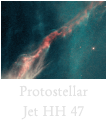

Elements in the constantly changing UniverseMolecular clouds: the birthplace of stars
Places in galaxies with amounts of gas and dust at particularly high levels
of concentration are called "molecular clouds*".
These clouds are composed mainly of hydrogen molecules,
but they also contain small amounts of water, carbon monoxide,
alcohol, and other components.
All of these substances are created from the diverse elements scattered
through the Universe when the lives of stars from previous generations end.
In other words, stars come from the elements, and return to the elements.
The Earth and the Sun, the stars in the sky,
and even our bodies are all part of this great cycle of elements.
And if we trace them back far enough, we find that all of the substances
that make up this constantly changing Universe were created
in the first three minutes after the Universe was born .
*Molecular clouds appear as dark clouds, and sometimes appear to glow as
they are illuminated by the light of nearby stars.

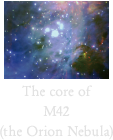
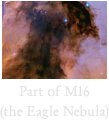
About This Site
The Aim of DIAGRAM OF OUR UNIVERSE
The aim of this “Diagram of Our Universe”, is to provide people with the opportunity to deepen their interest in the Universe and to open a new way to enjoy it. The origin of the matter around us, the history and structure of the Universe, and their relation to human being.., these questions which everyone has wondered are thoroughly examined here incorporating the latest astronomy results. It might seem overwhelming at first, but please read it slowly and carefully.
Production of Contents
The first edition of “Diagram of Our Universe” was published in 2007, as the third in the series of “One Per Household” posters. This site introduces the revised version from 2013, with new knowledge acquired in the following 5 years.
A "One Per Household" poster series is produced and distributed by Ministry of Education, Culture, Sports, Science and Technology (MEXT) of Japan for the “Science and Technology Week”.
"DIAGRAM OF OUR UNIVERSE 2013"
| Supervisor: | 文部科学省、日本天文学会 天文教材委員会 |
|---|---|
| Copyright and sales: | (公財)科学技術広報財団 |
| Planning: | 国立天文台、天文学普及プロジェクト「天プラ」 |
| Production: |
"DIAGRAM OF OUR UNIVERSE 2013" Production Committee 縣秀彦、小阪淳、高梨直紘、平松正顕、亀谷和久、塚田健、川越至桜、成田憲保、内藤誠一郎、日下部展彦、高田裕行、石川直美、杉山直、市来淨與、山岡均 ほか |
| Art Direction: | 小阪淳 |
| Copy Direction: | 片桐暁 |
| Special Thanks: | 観山正見、佐藤勝彦、駒宮幸男、青木和光、三浦均、額谷宙彦、杵島正洋、石崎昌春、東京大学国際高等研究所 カブリ数物連携宇宙研究機構(Kavli IPMU)、村山斉、Kevin Bundy ほか |
| References: | "Nine-Year Wilkinson Microwave Anisotropy Probe (WMAP) Observations: Cosmological Parameter Results", arXiv:1212.5226 |
| Images: | 国立天文台・ハワイ観測所すばる望遠鏡、三鷹キャンパス50cm望遠鏡、石垣島天文台105cm望遠鏡/TMT観測所公社/国立天文台4次元デジタル宇宙プロジェクト(4D2U)/小久保英一郎/長島雅裕/矢作日出樹/小泉周/吉田直紀/ALMA (ESO/NAOJ/NRAO)/Andrew Fruchter/Anglo-Australian Observatory/AURA/David Malin Images/Adam Riess (STScI, Baltimore, MD)/Caltech/Canada-France-Hawaii Telescope/Coelum/CNES/CXC/the ERO team/ESA/ESO/HEIC/INAF/JPL/J.William Schopf,University of California,Los Angeles/Malin Space Science Systems/NASA/NOAA/Palomar Observatory Sky atlas - National Geographic Society/S.Andreon et al Optical: DSS; ESO/SAO/SOHO/Space Science Institute/STScI/The Hubble Heritage Team/PDB ID:1DNN Trifonov,E.N.,Sussman,J.L.,Smooth bending of DNA in chromatin.In:"Molecular Mechanisms of Biological Recognition"(Ed. M. Balaban),Elsevier/North Holland Biomed.Press,1979,pp.227-232/VLT/WMAP Science Team |
"DIAGRAM OF OUR UNIVERSE 2013" Web Production Committee
夏苅聡美、内藤誠一郎、小阪淳、高梨直紘、平松正顕、川越至桜、成田憲保
Special Thanks:玉置陽一、小林秀明
National Astronomical Observatory of Japan / Public Relations Center
Download
Printed poster of "Diagram of Our Universe" is distributed at production cost through the Japan Foundation of Public Communication on Science and Technology. The poster is a reversible design with Japanese and English on opposite side of a double-sided A1/ A2 size poster.
For further information, see Japan Foundation of Public Communication on Science and Technology web site.

Free PDF distribution of the poster is available from the “Science and Technology week” (MEXT) web site.
https://www.mext.go.jp/stw/
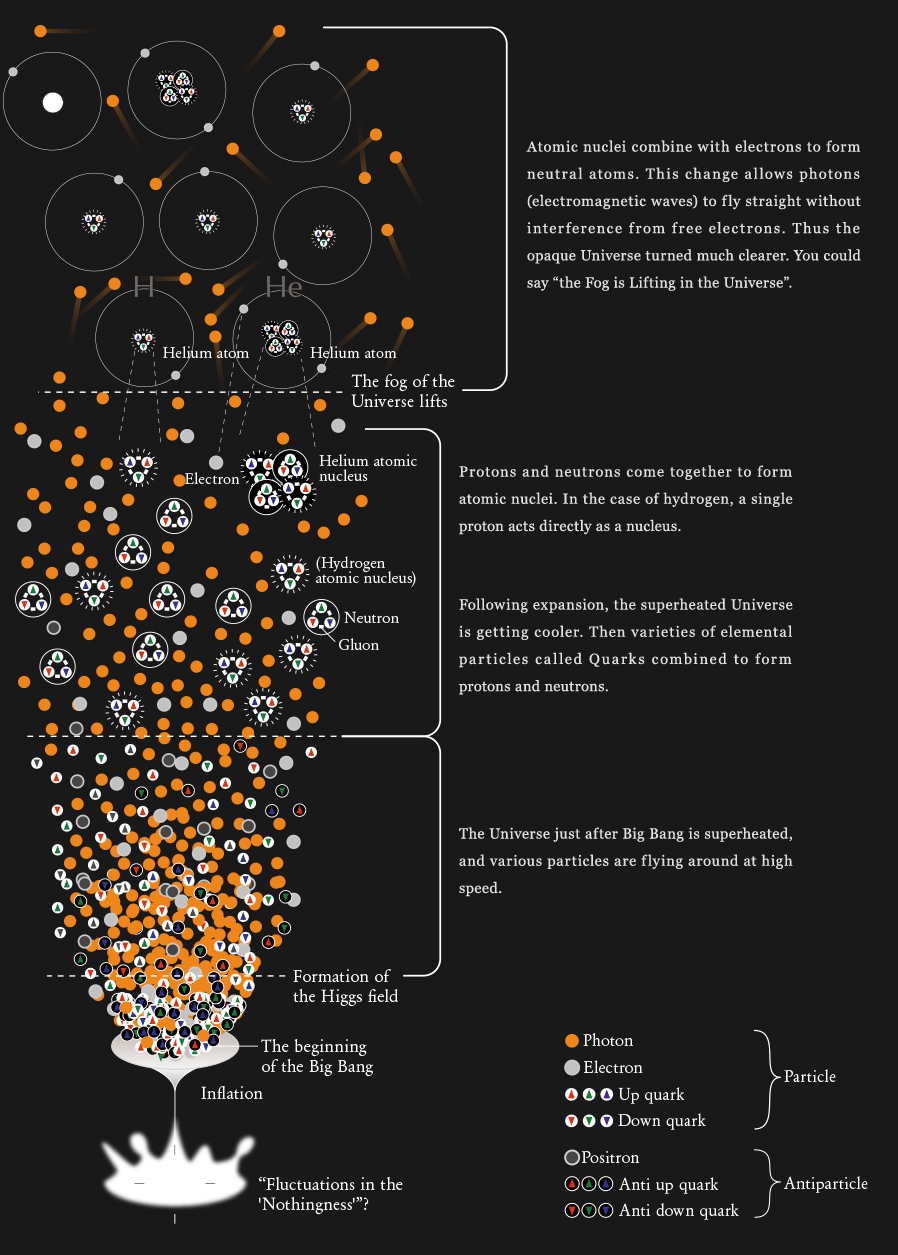
地球の歴史
Structure of "Diagram of Our Universe"
The main visual shapes of “inverted cone” and “teardrop” in this diagram are calculated based on the Lemaitre-model assuming a spatial curvature equal to zero. The inverted cone shape begins from the start point of Recombination (when the Universe became transparent to radiation, about 370,000 years after the beginning) at the bottom, and represents the expansion history of the region observed in Cosmic Microwave Background (CMB) radiation. The teardrop shape illustrates the distance to celestial objects in “the Universe as we see it today” at the point when it emitted the light. To describe these shapes, it requires understanding two concepts of different distance; “comoving distance” and “proper distance”.
Comoving distance is the distance between two arbitrary points fixed in the space, measured with an elastic ruler proportional to expansion of space (comoving). Measuring with this elastic distance ruler, a distance between two points is constant and does not change in time because measure itself expands with space.
Proper distance is the distance measured with a solid ruler keeping constant size regardless of spatial expansion. It might be similar concept of “distance” usually we use. Measuring with this solid distance ruler, a distance between two points defers with the spatial expansion: it becomes larger when space expands, and gets smaller when contracts.
Comoving distance is defined as the distance at present time to an object observed in a certain redshift z. In this diagram, this distance corresponds to horizontal radius on the top plane of inverted cone.
With assumption of spatial curvature k=0, then comoving distance DC(z) to an object at cosmological redshift z is written as:

here c is the speed of light, H0 is the Hubble constant, DH is the Hubble distance, Ω M is the Density Parameter and ΩΛ is the Cosmological Constant.
On the other hand, the distance to that object at any point in time is the proper distance.
With assumption of spatial curvature k=0, then the proper distance to an object at comoving distance Dc in the age corresponding to redshift z DP(z) is written as;

From this definition, proper distance at present (z=0) is equal to comoving distance.
The shape of inverted cone is the track of proper distance in each age to the region which emitted cosmic microwave background radiation (z=1090). The teardrop shape is the envelope of proper distance to the object at a certain redshift z when it emitted the light now we observe, during z=0 to 1090. This main visual is drawn based on above calculation.
We adopt cosmological parameters based on recent results from ESA’s Planck space telescope, as following;
| H0 | 67.15 (km/s/Mpc) |
|---|---|
| ΩM | 0.317 |
| ΩΛ | 0.683 |
"Planck 2013 results. XVI. Cosmological parameters", arXiv:1303.5076,
[Planck+WP+high-l] in Table 5
Reference:
Suto, Yasushi, Ippan Soutairon Nyuumon [Guide to the General Relativity], Nippon Hyoron Sha, 2005Phillip James Edwin Peebles, Principles of Physical Cosmology, pp 310-321, Princeton University Press, 1993
Looking for life on the planets of our Solar System
Does life exist somewhere in the Universe, aside from on the planet Earth?
First, let's look at the possibilities in our own Solar System.
Our Solar System comprises several celestial bodies of various sizes and environments.
Our Solar System includes: the Sun, eight planets, asteroids and comets
(including trans-Neptunian objects and dwarf planets such as Pluto), and satellites.
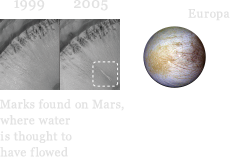
Developments in space exploration technologies have enabled new scientific research aimed at seeking out life on other planets. We can now send probes directly to other planets in our Solar System to look for traces of life. Among the main targets for these probes are Mars, where liquid was thought to exist on the planet’s surface, and Europa (one of Jupiter’s moons), where an ocean is believed to lie hidden under a thick layer of ice. There is little likelihood of finding intelligent life or advanced life forms there, but one day, we may discover microorganisms on these celestial bodies similar to those found on Earth.
Looking for "Another Earth"
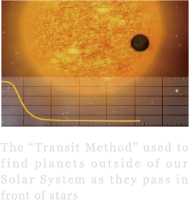
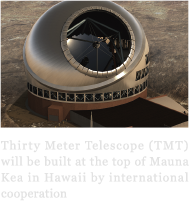
Does life exist in the vast expanses of the Universe outside of our Solar System? In 1995, for the first time in history, astronomers discovered a planet around a distant star. Since then, astronomers have discovered more than 800 planets outside of our Solar System, using a variety of clues; for example, minute variations in the movement of stars resulting from the revolution of planets around the stars, or slight changes in the brightness of stars when planets pass in front of them.
Based on observations by astronomers up to now, we have learned that there are many diverse planetary systems outside of our own. Recently, in addition to large, heavy “Jovian” planets, astronomers have discovered planets that are similar to Earth in both size and mass. Furthermore, a number of the planets discovered could potentially sustain large bodies of liquid water on the surface, given that they maintain an appropriate distance from their host stars, as is in the case of Earth. It may not be long before we finally discover a planet that could be called “Another Earth”.
Celestial bodies outside of our Solar System are so far away that even if we found a planet that could be called another Earth, we would not be able to send a probe to explore it directly. Therefore we must use other methods to determine whether those planets could sustain life; for example, by observing the planet’s surface environment or atmosphere using space telescopes or extremely large telescopes on Earth to confirm whether water exists there in liquid form, or by looking for traces of substances such as oxygen, ozone, and methane (referred to as “biomarkers”), which living organisms could potentially form. Future research will help to clarify whether analogs to terrestrial planets and terrestrial life exist elsewhere in the Universe.











